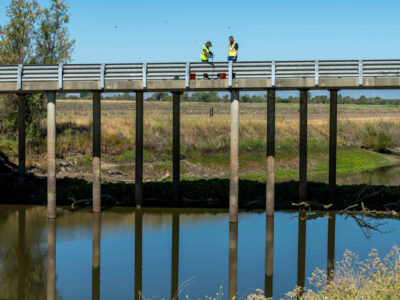May is a critical month for water quality results
Mid-May is the typical 50% plant date for rice in the Sacramento Valley. As such, it is also the month for pre-emergence pesticide application and thus a critical time for water quality results.
Early monitoring results for the Rice Pesticide Program (RPP) from late April were non-detect. Remember to strictly follow label and county requirements, including water holds, for thiobencarb applications. In addition, regularly inspect levees and fields for seepage around boxes and discharge canals. We anticipate higher acreage treated this year compared to last year.
The water quality monitoring under the Irrigated Lands Regulatory Program (ILRP) Waste Discharge Requirements (WDR) began in early May. The WDR program has expanded monitoring parameters in the 2025 “assessment” year, which includes an expanded number of sample locations (7 total), additional water quality constituents and water and sediment toxicity. Remember to strictly follow label and county requirements, including water holds, for all pesticide applications. Applications to non-target areas can greatly impact water quality results and are a waste of product dollars.
Pyrethroid and associated toxicity testing is occurring at the upper Colusa Basin Drain and Sacramento Slough near Karnak monitoring locations. Additional sampling may be conducted upstream of the upper Colusa Basin Drain in late May. Pyrethroids are primarily used in rice to control rice water weevil and tadpole shrimp. Pyrethroid products can be toxic to fish and aquatic organisms, adhere readily to soil, and have a 7-day water hold when applied to rice. It is imperative that growers and applicators follow the label requirements, ensure application accuracy, and retain sediments in the growing basins.
Growers in these watersheds received a letter this month from the CRC to inform them that they will be required to report on pyrethroid use practices and information in the fall of 2025, as administered by the CRC.
For more information, contact the CRC’s Industry Affairs Manager Craig Riddle at criddle@calrice.org or (916) 812-3468.



